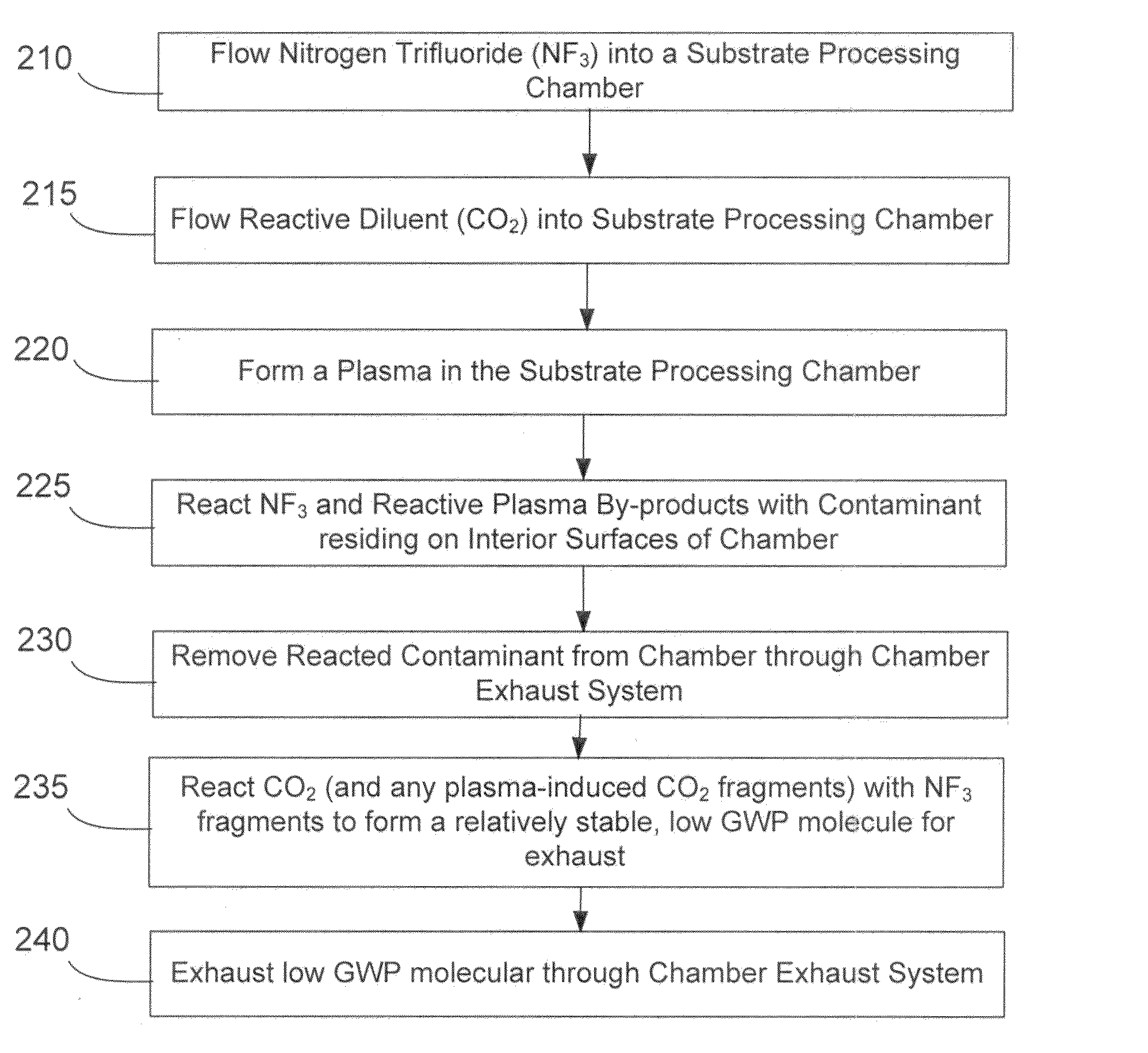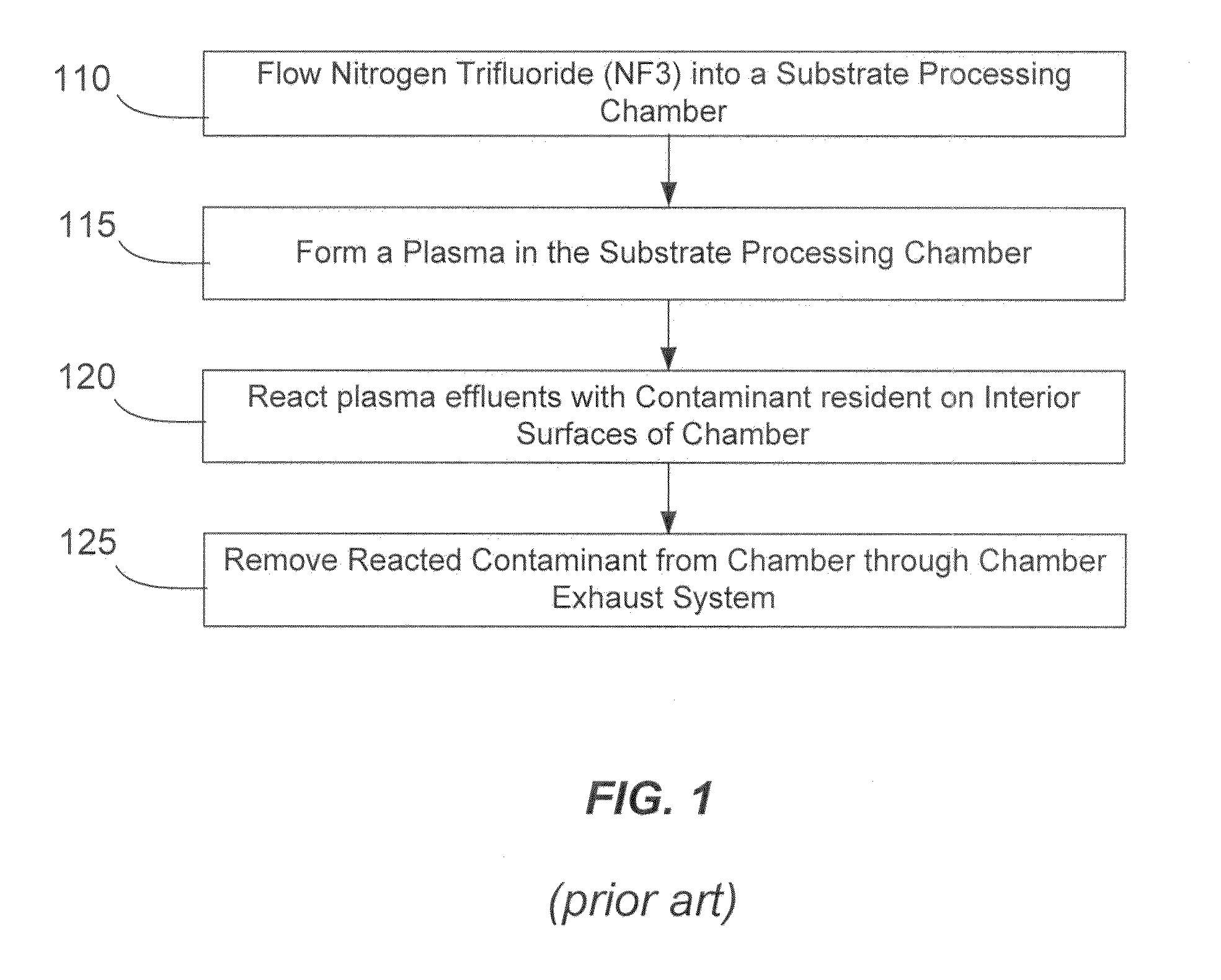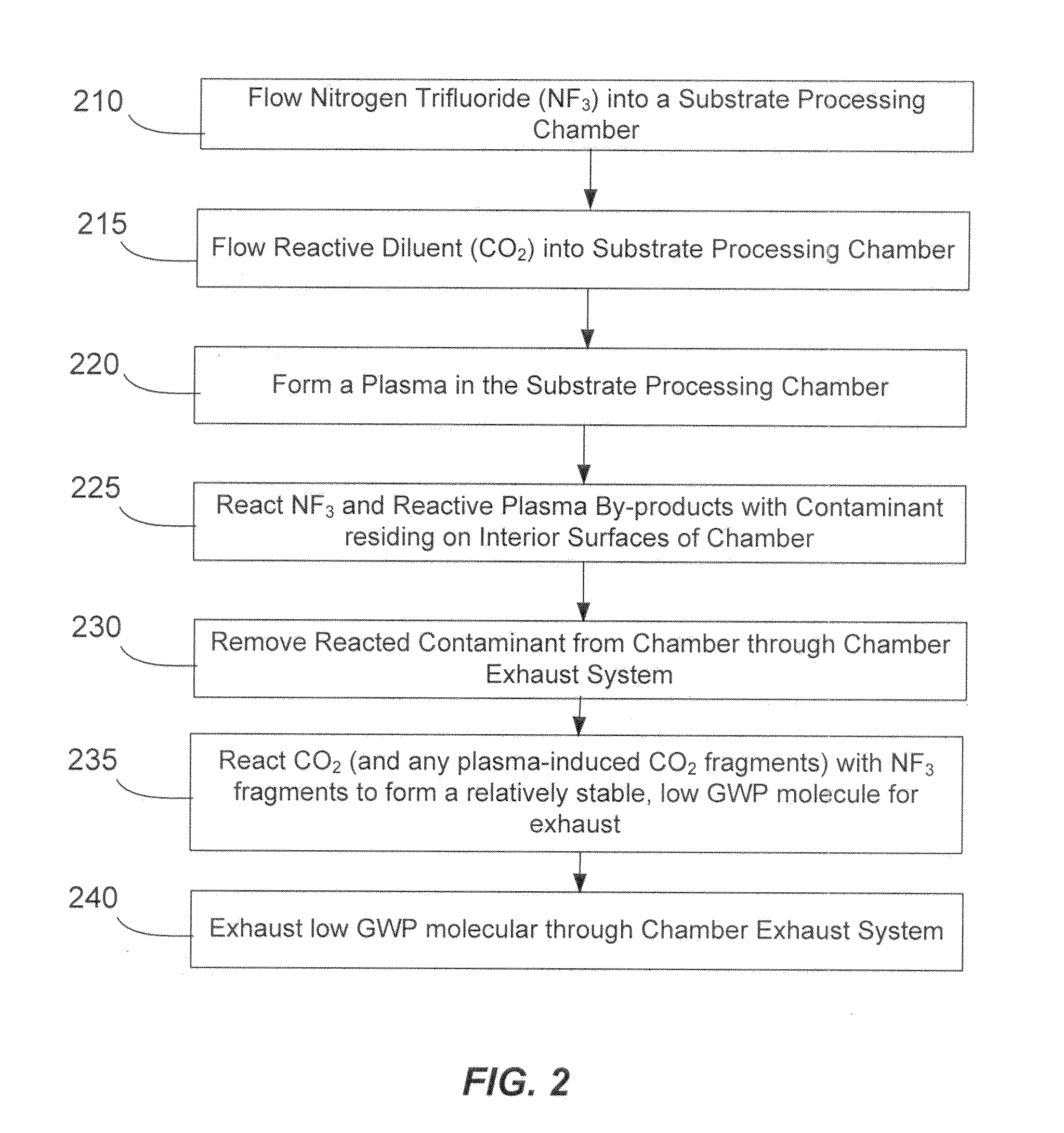NF3 chamber clean additive
a technology of additives and chambers, applied in the field of nf3 chamber clean additives, can solve the problems of reducing the ability of nf/sub>3/sub>to reform, reducing the quantity of discarded nf/sub>3/sub>, etc., and achieve the effect of reducing the ability of nf3 to reform and enhancing the chamber-cleaning effect of nf3
- Summary
- Abstract
- Description
- Claims
- Application Information
AI Technical Summary
Benefits of technology
Problems solved by technology
Method used
Image
Examples
Embodiment Construction
[0016]Methods of cleaning a process chamber with nitrogen trifluoride (NF3) are described. The methods involve a concurrent introduction of nitrogen trifluoride and a reactive diluent into a process chamber. The NF3 may be excited in a plasma inside the chamber or in a remote plasma region upstream from the chamber. The reactive diluent may be introduced upstream or downstream of the remote plasma such that both NF3 and the reactive diluent (and any plasma-generated effluents) are present in the chamber during cleaning. The presence of the reactive diluent enhances the chamber-cleaning effectiveness of the NF3 which allows less NF3 to be used and discarded. The reactive diluent may also reduce the ability of the NF3 to reform and therefore, further reduce the quantity of discarded NF3. Exemplary chambers may include chemical vapor deposition (CVD) chambers, physical vapor deposition (PVD) chambers, and atomic-layer deposition (ALD) chambers, among other kinds of process chambers.
[00...
PUM
| Property | Measurement | Unit |
|---|---|---|
| GWP | aaaaa | aaaaa |
| etch rate | aaaaa | aaaaa |
| electro-mechanical properties | aaaaa | aaaaa |
Abstract
Description
Claims
Application Information
 Login to View More
Login to View More - R&D
- Intellectual Property
- Life Sciences
- Materials
- Tech Scout
- Unparalleled Data Quality
- Higher Quality Content
- 60% Fewer Hallucinations
Browse by: Latest US Patents, China's latest patents, Technical Efficacy Thesaurus, Application Domain, Technology Topic, Popular Technical Reports.
© 2025 PatSnap. All rights reserved.Legal|Privacy policy|Modern Slavery Act Transparency Statement|Sitemap|About US| Contact US: help@patsnap.com



